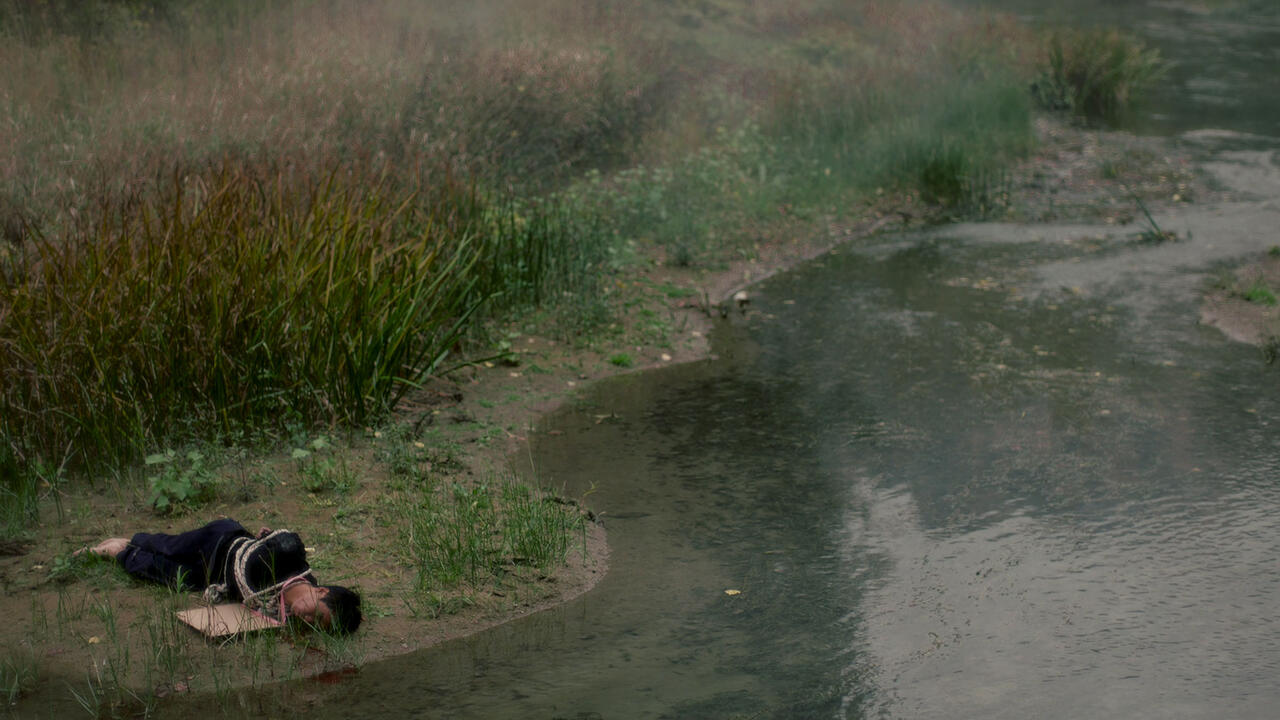Currents: Painting
Painting Forever! in Berlin
Painting Forever! in Berlin

This year’s autumn art season in Berlin seemed to adhere to the nesting principle of Russian matryoshka dolls: everything was broken down, large to small. Within Berlin Art Week hid Painting Forever! Within Painting Forever! hid four Berlin institutions primarily presenting the work of painters living in Berlin. At a further remove, this communal exhibition project – whether it intended to or not – also reflected the art market’s actual (or alleged) hierarchies: the established (and consistently male) positions were presented in spacious settings (Franz Ackermann in the Berlinische Galerie) or with large-format works in museums: Martin Eder, Michael Kunze, Anselm Reyle, and Thomas Scheibitz for BubeDameKönigAss (JackQueenKingAce) at the Neue Nationalgalerie. Meanwhile, the ‘others’ either had to jostle for space with more than 70 artists in a salon-style hang at KW Institute for Contemporary Art (Keilrahmen [Stretchers]) or ended up in the ever-aspirational Deutsche Bank KunstHalle. To Paint Is To Love Again was the name of the exhibition on display there, curated by Eva Scharrer, showing the works of four female artists – a sort of touchy-feely all-female counterpoint to the ostentatious guy party in the Nationalgalerie. Unsurprisingly, the arrangement drummed up old gender stereotypes. In an interview in Der Tagesspiegel, Udo Kittelmann went so far as to declare Painting Forever! well-balanced: ‘I see Painting Forever! as a whole; the four female artists in the DB KunstHalle even it out.’ Keilrahmen, in contrast – the group show curated by Ellen Blumenstein – gave the impression that someone had simply walked through all of the capital’s studios collecting works in a large net and then installed as many of them as possible on a wall. (With this, Keilrahmen fatally recalled Macht Kunst [Make Art], a populist art event that took place earlier in the year at KunstHalle.) A question rumbled behind all of this: is it still possible today to make painting itself the subject of a mini biennial?

The project disregards these sorts of basic, urgent questions as well as questions of proportion, in a way that seems symptomatic of the haphazard operations of Berlin’s cultural politics and the weaknesses of its institutions. The institutions carrying out Painting Forever! set forth a Berlin-centric plan, and in return, the city proved itself willing to underwrite the entire operation with half a million euros and a region-wide marketing campaign. The calculation: make up for the absence of a popular, multi-faceted art fair (one missed in the city since Art Forum Berlin was discontinued in 2011) with a blockbuster exhibition like Painting Forever! which ought to make Berlin’s autumn art season relevant and attract as many foreign visitors to the city as possible. Viewed in this light, the exhibition’s inherent thesis – that there exists the genre of ‘underappreciated painting’, which can now finally get the attention it deserves – can be turned on its head: it’s precisely its popularity that predestines painting to this sort of grand exhibition. It remains a mystery, however, why all four exhibitions limit themselves to artists that live in Berlin. Is this perhaps an effort to construct something like a ‘Berlin School’?

Meanwhile the actual discourse of painting is moving in a different direction. Painting has long since freed itself from its frame; today, it relates to the manifold contexts in which it floats – be it the market, the spaces of galleries and museums in which it is shown, or the various social networks through which it circulates. All of this was only reflected in Ackermann’s contributions – who, for Hügel und Zweifel (Hills and Doubts), covered the walls of the large entrance hall in the Berlinische Galerie with giant, abstract, landscape-like murals – and in the works of Antje Majewski at the KunstHalle. The exhibition there presented Majewski’s pieces alongside those of Katrin Plavcˇak and Giovanna Sarti, as well as late paintings by the little-known Berlin artist Jeanne Mammen (1890–1976). In the ’60s, Mammen worked small pieces of tin foil from chocolate wrappers into her abstract-figurative compositions. The transfer of the everyday into one’s own production takes different forms in the works of the other artists: news images of the whistleblower Bradley Manning appear in Plavcˇak’s work, for example, while Majewski paints ‘worthless’ found objects like shells and integrates small piles of broken bricks into her installations.
Keilrahmen and BubeDameKönigAss, in contrast, limited painting to the framed canvas, and with that, put an obsolete and conservative conception of format on the agenda. But it’s precisely this definition that has no chance at longevity. This approach to the field that – due to ulterior motives – simply ignored its plurality and interconnectedness was one predestined to fail.
Translated by Jesse Coburn
















